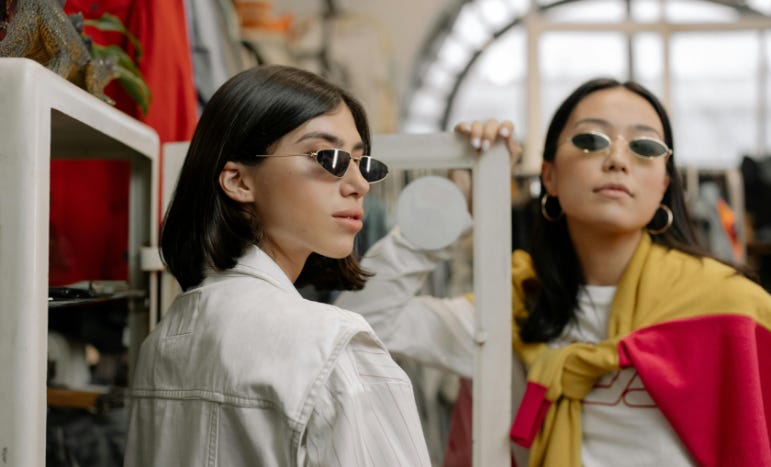The Rise of Sustainable Fashion: Impact on Youth and Adult Consumers
As awareness of environmental issues and social responsibility continues to grow, the fashion industry is undergoing a significant transformation. Sustainable fashion, characterized by eco-friendly materials, ethical production practices, and a commitment to reducing waste, is becoming increasingly popular, particularly among young consumers. This article explores the growth of sustainable fashion, its influence on youth trends, and its broader impact on adult buying habits.
The Emergence of Sustainable Fashion
Sustainable fashion is no longer just a niche market; it has become a movement that reflects a shift in consumer values. As young consumers grow more conscious of the environmental impact of their purchasing decisions, they are increasingly seeking out brands that align with their values. This shift is driven by several factors:
-
Environmental Awareness
Young people are at the forefront of climate activism and environmental conservation efforts. They are more informed about the negative impacts of fast fashion, including pollution, waste, and exploitative labor practices. This awareness has led to a demand for transparency in the fashion supply chain and a preference for brands that prioritize sustainability.
Learn More About Sustainable Fashion -
Social Responsibility
Today’s youth are also concerned about the social implications of their purchases. They seek brands that support fair labor practices, ethical sourcing, and community engagement. This focus on social responsibility encourages young consumers to invest in companies that contribute positively to society.
Social Responsibility in Fashion -
Influence of Social Media
Social media platforms have amplified the voices of sustainable fashion advocates. Influencers, bloggers, and activists use these platforms to promote eco-friendly brands and share tips on sustainable living. As young consumers engage with this content, they become more likely to support sustainable fashion initiatives.
Social Media’s Role in Sustainable Fashion
Shaping Youth Trends
Sustainable fashion is not just a passing trend; it is reshaping the very fabric of youth culture. Here are some ways in which eco-friendly choices are influencing young consumers:
-
Thrifting and Upcycling
Thrifting has become a popular activity among young people, with many seeking unique vintage pieces that reflect their individuality. Upcycling, or transforming old clothing into new, stylish items, is another trend gaining momentum. These practices not only reduce waste but also promote creativity and self-expression.
The Popularity of Thrift Shopping -
Preference for Minimalism
Many young consumers are adopting minimalist lifestyles, focusing on quality over quantity. They are increasingly favoring timeless, versatile pieces that can be worn in multiple ways. This shift away from fast fashion means that young people are willing to invest in higher-quality items that have a longer lifespan.
Minimalism in Fashion -
Supporting Ethical Brands
The rise of sustainable fashion has led to the emergence of numerous ethical brands that prioritize environmental and social responsibility. Young consumers are drawn to these brands for their commitment to sustainability, as well as their ability to offer stylish, trendy clothing without compromising on values.
Ethical Fashion Brands to Know
Influencing Adult Buying Habits
The impact of sustainable fashion is not limited to young consumers; it is also influencing the buying habits of adults. As the demand for eco-friendly products grows, brands are increasingly adapting their practices to cater to this shifting market. Some key ways this influence is manifesting include:
-
Increased Availability of Sustainable Options
Many mainstream fashion retailers are recognizing the shift in consumer demand and are beginning to offer sustainable collections. These brands often promote their eco-friendly initiatives to attract younger consumers and influence adult shoppers who want to align their purchases with sustainable values.
Sustainable Fashion from Mainstream Retailers -
Rethinking Consumption Habits
Adults are becoming more mindful of their consumption habits, driven by the awareness instilled in younger generations. The push for sustainable fashion encourages consumers of all ages to consider the environmental impact of their choices, leading to a gradual shift towards more conscious consumption.
The Rise of Conscious Consumption -
Willingness to Invest in Sustainable Products
Adults are increasingly willing to invest in higher-priced sustainable items, recognizing the value of quality and longevity. This shift is particularly evident among those who have children, as they want to set an example of responsible consumption for future generations.
Why Consumers Are Willing to Pay More for Sustainability
The Future of Sustainable Fashion
The future of sustainable fashion looks promising, as the movement continues to gain momentum across all demographics. As technology advances, new materials and production methods are emerging, making it easier for brands to create eco-friendly products. The use of innovative fabrics made from recycled materials, biodegradable textiles, and even lab-grown leather are just a few examples of how the industry is evolving.
Innovative Sustainable Fashion Materials
Moreover, education plays a crucial role in promoting sustainable fashion. Initiatives in schools, communities, and social media campaigns are essential for raising awareness about the importance of sustainable choices. By equipping young consumers with the knowledge and tools to make informed decisions, the movement can continue to grow and influence broader societal trends.
How Education Can Promote Sustainable Fashion
Conclusion
Sustainable fashion is not merely a trend; it represents a profound shift in consumer behavior, particularly among young people. As awareness of environmental and social issues continues to rise, sustainable choices are shaping youth trends and influencing adult buying habits alike. By prioritizing eco-friendly and ethical practices, the fashion industry has the opportunity to create a more sustainable future, one where style and responsibility go hand in hand. As both young and adult consumers embrace these values, the potential for lasting change in the fashion landscape becomes increasingly attainable.
















